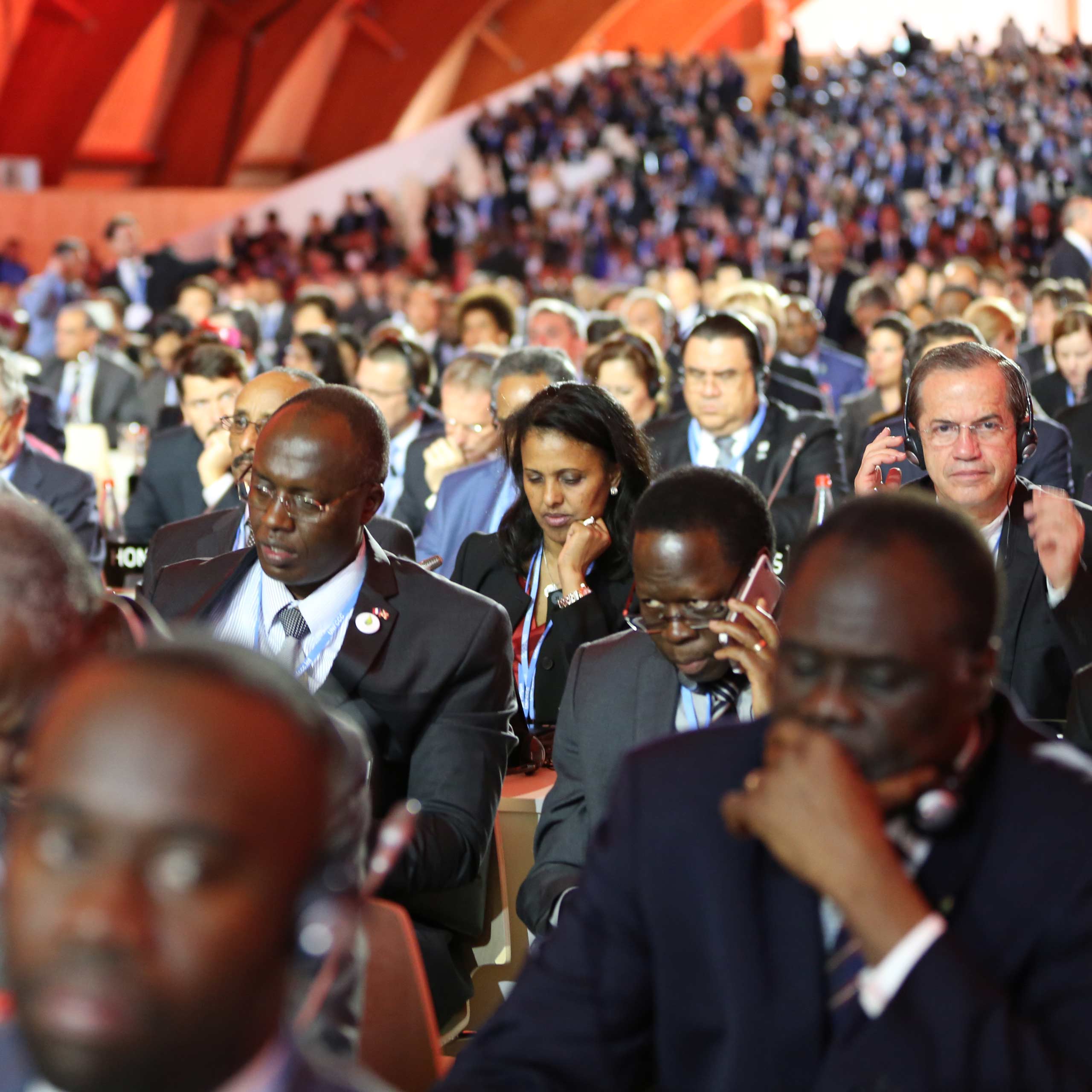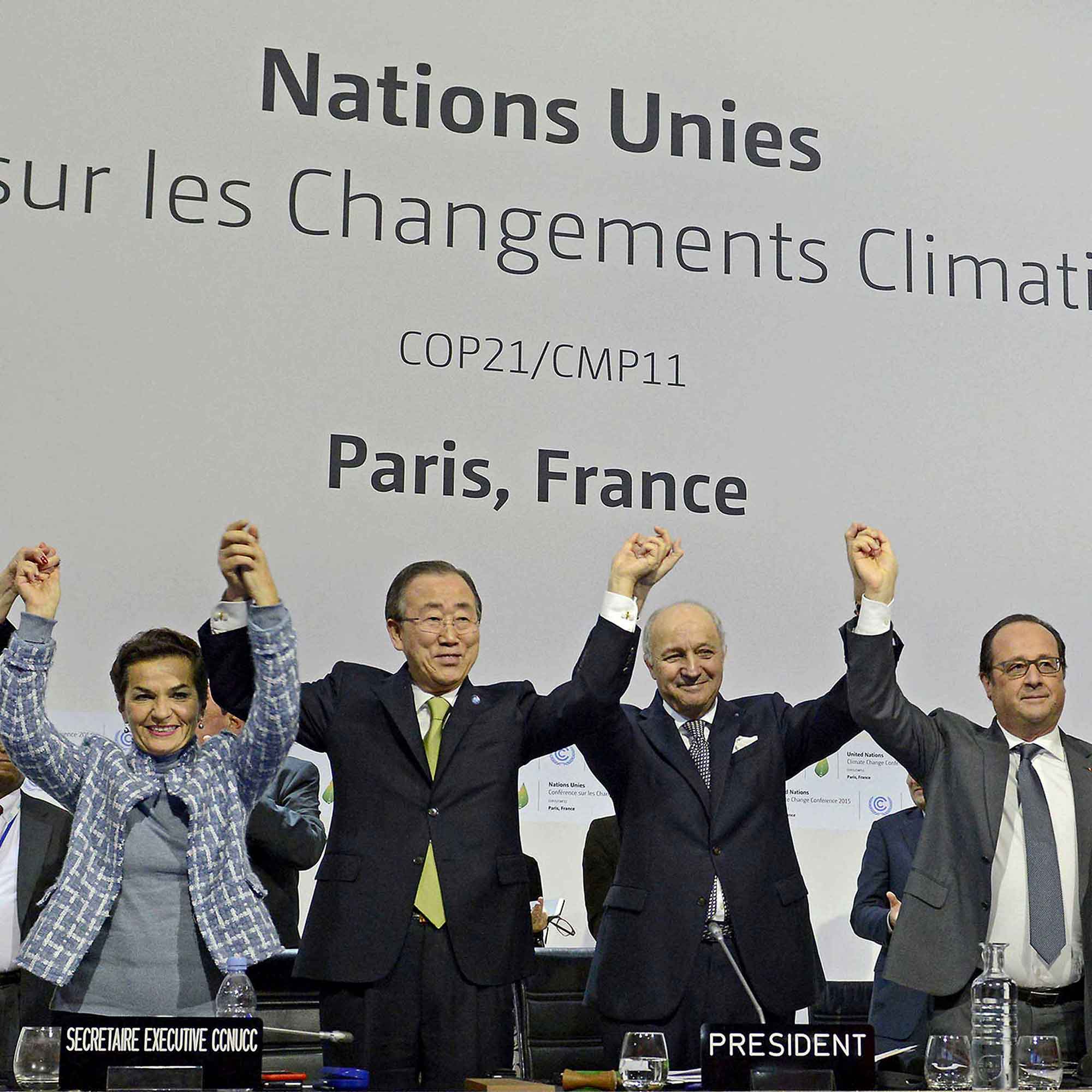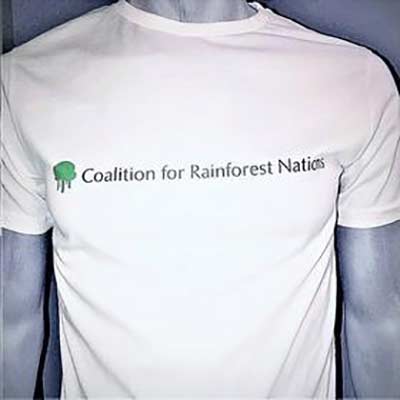How UNFCCC REDD+ works
How UNFCCC REDD+ works
Rainforest nations and their communities implement domestic policies, initiatives and programs to preserve rainforests at national level over a significant period of time.
Country Requirements
To participate in REDD+, and before receiving payments, countries must have in place:
- A national strategy or action plan
- A national forest reference emission level and/or forest reference level (FREL/FRL)[1]
- A robust and transparent national forest monitoring system[2]
- A system for providing information on how safeguards have been addressed and respected throughout the implementation of the activities
Countries must then introduce a national strategy and other policies over a period of years to slow deforestation and prove that these efforts have been successful. A country’s performance is reported and verified through the UNFCCC’s Measuring, Reporting and Verification (MRV) system, which was designed by many decisions made by over 190 countries at the annual COP meetings.
[1] Or, if appropriate, as an interim measure, subnational FREL/FRL.
[2] Or, if appropriate, subnational monitoring and reporting as an interim measure, in accordance with national circumstances.
Measuring, Reporting & Verification (MRV)
Countries may not receive finance unless REDD+ activities are fully measured, reported, and verified by UNFCCC.
Measurement
Countries must measure forest-related emissions and removals using IPCC’s guidelines and guidance for national GHG inventories,[1] consistent with their national GHG inventory.[2] With this information countries must develop a REDD+ reference level (FREL/FRL), including the use of historical data, and for the purposes of establishing a benchmark defined in tons of CO2 equivalent per year[3]. Once REDD+ activities have been implemented, countries may estimate emission reductions and removals by comparing against the established FREL/FRL.
Measurement is conducted through a National Forest Monitoring System (NFMS), or equivalent, that uses a combination of remote sensing and ground-based forest carbon inventory approaches for estimating, as appropriate, anthropogenic forest-related greenhouse gas emissions by sources and removals by sinks, forest carbon stocks and forest area changes.[4]
The NFMS should provide estimates that are transparent, consistent, accurate, and that reduce uncertainties, taking into account national capabilities and capacities.[5] Further, these estimates must be transparent, and their results should be available and suitable for review as agreed by the COP[6] (see verification below).
FREL/FRL values to reflect future trends in emissions and removals not represented by historical data. A total of 69 FREL/FRL have been submitted to the UNFCCC, 8 have been adjusted for national circumstances.[8]
For the development of the FREL/FRL, countries should do so transparently, taking into account historic data and adjust for national circumstances.[7] Adjustments are modifications to the
An important principle embedded in COP decisions for REDD+ measurement is the step-wise approach, which enables countries to improve and update the FREL/FRL by incorporating better data, improved methodologies and, where appropriate, additional pools.[9] Thus, FREL/FRL may be periodically updated, as appropriate, taking into account new knowledge, new trends and any modification of scope and methodologies.[10]
When submitting a FREL/FRL, countries should provide the information used, including historical data, in a comprehensive and transparent way.[11] The information submitted must be transparent, complete, consistent, and accurate, including methodological information, such as a description of data sets, approaches, methods, models, and include assumptions used, descriptions of relevant policies and plans, and descriptions of changes from previously submitted information.[12]
When measuring FREL/FRL emissions and removals, countries must include information on the pools, GHGs and REDD+ activities included, and the reasons for omitting a pool and/or activity, noting that significant pools and/or activities should not be excluded.[13]
Countries should also provide the definition of forest used in the FREL/FRL and, if appropriate, in case there is a difference with the definition of forest used in the national greenhouse gas inventory or in reporting to other international organizations, an explanation of why and how the definition used in the construction of forest reference emission levels and/or forest reference levels was chosen.[14]
For the measurement of REDD+ results, countries must use data and information that is transparent and consistent over time with the FREL/FRL.[15] Emission reductions and removals must also be expressed in tons of CO2 equivalent per year.[16]
[1] Decision 4/CP.15, paragraph 1(c)
[2] Decision 12/CP.17, paragraph 8
[3] Decision 12/CP.17, paragraph 7
[4] Decision 4/CP.15, paragraph 1(d)(i)
[5] Decision 4/CP.15, paragraph 1(d)(ii)
[6] Decision 4/CP.15, paragraph 1(d)(iii)
[7] Decision 4/CP.15, paragraph 7
[8] Bhutan, Colombia, Congo, Gabon, Guyana, Suriname, and Viet Nam.
[9] Decision 12/CP.17, paragraph 10
[10] Decision 12/CP.17, paragraph 12
[11] Decision 12/CP.17, annex, paragraph a
[12] Decision 12/CP.17, annex, paragraph b
[13] Decision 12/CP.17, annex, paragraph c
[14] Decision 12/CP.17, annex, paragraph d
[15] Decision 14/CP.19, paragraph 3
[16] Decision 14/CP.19, paragraph 4

Source: UNFCCC REDD+ hub
Reporting
The COP decided that the FREL/FRL may reported and updated at any time, while REDD+ results should be reported in conjunction with Biennial Update Reports (BUR)[1] or Biennial Transparency Reports (BTR)[2]. Countries must report information on the rationale and development of their FREL/FRL, which may be updated to reflect better knowledge and methods.
When reporting REDD+ results, countries must include information on the assessed FREL/FRL,[3] the activities included in the FREL/FRL,[4] the territorial area covered,[5] the date of FREL/FRL submission, the date of the final technical assessment report,[6] the period (in years) of the assessed FREL/FRL. Further, countries should report[7]:
- results in tons of CO2 equivalent per year, consistent with the assessed FREL/FRL[8]
- that the methodologies used to produce the results are consistent with those used to establish the assessed FREL/FRL[9]
- a description of the NFMS and the institutional roles and responsibilities for measuring, reporting, and verifying the results[10]
- necessary information that allows for the reconstruction of the results[11]
The summary of information of safeguards should be reported periodically and be included in national communications. It should include information on how the REDD+ safeguards are being addressed and respected throughout the implementation of the REDD+ activities.[12] This summary may also be provided, on a voluntary basis, via the web platform on the UNFCCC website.[13]
The summary of safeguards should be provided after the start of the implementation REDD+ activities.[14]Subsequent presentations of the summary of information should be consistent with the provisions for submissions of national communications.[15]
All reports are publicly available on the REDD+ Web Platform.
[1] Decision 14/CP.19, paragraphs 6 and 7
[2] When reporting under the Paris Agreement, according to decision 18/CMA.1, paragraph 14
[3] Decision 14/CP.19, annex, paragraph 1 (a)
[4] Decision 14/CP.19, annex, paragraph 1 (b)
[5] Decision 14/CP.19, annex, paragraph 1 (c)
[6] Decision 14/CP.19, annex, paragraph 1 (d)
[7] Decision 14/CP.19, annex, paragraph 1 (e)
[8] Decision 14/CP.19, annex, paragraph 2
[9] Decision 14/CP.19, annex, paragraph 3
[10] Decision 14/CP.19, annex, paragraph 4
[11] Decision 14/CP.19, annex, paragraph 5
[12] Decision 12/CP.17, annex, paragraph 4
[13] Decision 12/CP.17, annex, paragraph 3
[14] Decision 12/CP.17, annex, paragraph 4
[15] Decision 12/CP.17, annex, paragraph 5
Verification
General approach to verification
The COP decided on a two-step, independent verification based process on a peer-review facilitated by the UNFCCC. For the FREL/FRL and the REDD+ results, separately, the UNFCCC Secretariat coordinates an independent technical assessment. For each, two LULUCF[1] experts are selected from the UNFCCC Roster of Experts, one from a developing country and another from a developed country.
In total, four LULUCF experts review a country’s estimation of REDD+ emission and/or removals[2]. Experts are nominated by Parties and are trained and certified by the UNFCCC. They work to develop technical assessment reports, containing issues and areas for improvement. These reports are also publicly available on the REDD+ Web Platform.
Each technical assessment takes about 9-12 months, followed by a one week UNFCCC verification meeting held in UNFCCC headquarters in Bonn, Germany. The UNFCCC Secretariat facilitates the verification and the engagement with countries. Verifications are guided by strict rules and procedures adopted by the COP, including the provision of data to enable full reconstruction of all GHG estimates. A particular emphasis on checking the transparency, consistency, and accuracy of data.
[1] Land use, land use change and forestry (LULUCF)
[2] Additional verification is due if REDD+ results are converted to ITMOs.
Nature of the verification
Verification of a FREL/FRL under the UNFCCC seeks to assess the degree to which information provided by Parties is in accordance with the guidelines for FREL/FRL.[1] It also offers a facilitative, non-intrusive, technical exchange of information on the construction of the FREL/FRL with a view to supporting the capacity a developing country. The purpose is to help Parties make improvements, as appropriate, for their FREL/FRL, subject to national capabilities and policy.[2]
For REDD+ results, verification seeks to analyze the extent to which there is consistency in methodologies, definitions, comprehensiveness, and the information provided between the assessed FREL/FRL and the REDD+ results.[3] LULUCF experts check the transparency, consistency, completeness, and accuracy of the data and information provided.[4]
LULUCF experts must refrain from making any judgment on domestic policies.[5]
[1] Decision 13/CP.19, annex, paragraph 1 (a)
[2] Decision 13/CP.19, annex, paragraph 1 (b)
[3] Decision 14/CP.19, paragraph 11 (a)
[4] Decision 14/CP.19, paragraph 11 (b)
[5] Decision 13/CP.19, annex, paragraph 4
Composition of the verification teams
The UNFCCC ensures a balanced representation of LULUCF experts from developing and developed countries. The Consultative Group of Experts (CGE) may nominate one of its experts from a developing country Party with relevant expertise to participate in the verifications as an observer. Each submission shall be assessed by two LULUCF experts selected from the UNFCCC roster of experts, one from a developed country and one from a developing country.[1]
Verifications are coordinated by the UNFCCC secretariat. The LULUCF experts are selected from the UNFCCC Roster of Experts. Participating experts will serve in their personal capacity and will be neither nationals of the Party undergoing the technical assessment nor be funded by that Party.[2]
For REDD+ results, the LULUCF experts will be included among the members selected for the technical team of experts, or TTE, which conducts the verification of BURs under the UNFCCC.[3]
[1] Decision 9/CP.13, annex, paragraph 9 for FREL/FRL, and decision 14/CP.19, paragraph 13 for REDD+ results
[2] Decision 9/CP.13, annex, paragraph 7
[3] Decision 14/CP.19, paragraph 10
Output of the verification
For the verification of FREL/FRL, LULUCF experts will conduct a thorough and comprehensive assessment of the submitted data and information. Then, they will prepare a report. Verification reports are published by the UNFCCC Secretariat via the UNFCCC REDD+ Web Platform. The reports contain the technical annex with REDD+ results, its analysis, areas for technical improvement identified as well as any comments and/or responses by the Party concerned, including areas for further improvement and capacity-building needs.
Reconstruction of the results
For both the FREL/FRL and REDD+ results, the COP decided that countries must provide complete information. This means that data is available for full reconstruction of the emissions and removals estimates.[1] If reconstruction is not possible, then LULUCF experts will note this in the verification report.
[1] Decision 13/CP.19, annex, paragraph 2 (c), and decision 14/CP.19, paragraph 11 (b)
Once REDD+ emission reductions and/or removals are verified, they are posted in the Lima Information Hub by the UNFCCC Secretariat.
Once REDD+ emission reductions and/or removals are verified, they are posted in the Lima Information Hub by the UNFCCC Secretariat.
REDD+ Results
Before receiving payments, REDD+ activities should be fully measured, reported, and verified.[1] Also, countries should have in place[2]:
- A national strategy or action plan
- A technically assessed FREL/FRL
- A national forest monitoring system (NFMS), capable of measuring the impacts of REDD+ activities with accuracy and transparency
- The most recent summary of information on how all of the safeguards have been addressed and respected[3]
Once REDD+ emission reductions and/or removals are verified, they are posted in the Lima Information Hub[4] by the UNFCCC Secretariat. Also, the Hub publishes information on the results of REDD+ activities and corresponding payments,[5] the quantity of results for which payments were received and the entities paying for them. Finally, the Hub contains the following information:[6]
- The results for each relevant period expressed in tons of carbon dioxide equivalent per year and a link to the technical report
- The assessed FREL/FRL expressed in tons of carbon dioxide equivalent per year and a link to the final verification report by the LULUCF experts
- The summary of information on how all of the safeguards are being addressed and respected
- A link to the national strategy or action plan
- Information on the national forest monitoring system, as provided in the technical annex of the Biennial Update or Transparency Report (BUR or BTR)
[1] Decision 9/CP.19, paragraph 3
[2] Decision 9/CP.19, paragraph 3
[3] Decision 9/CP.19, paragraph 4
[4] Decision 9/CP.19, paragraph 9
[5] Decision 9/CP.19, paragraph 9
[6] Decision 9/CP.19, paragraph 9, items a-e
Acronyms and Abbreviations
AFOLU – Agriculture, Forestry and Other Land Use
BTR – Biennial Transparency Report
BUR – Biennial Update Report
CMA – Conference of the Parties serving as the meeting of the Parties to the Paris Agreement (CMA) Bodies.
CO2 – Carbon dioxide
COP – Conference of the Parties to the UNFCCC
FREL/FRL – Forest reference emission level/ Forest reference level
GHG – Greenhouse Gas(es)
GHGI – National Greenhouse Gas Inventory
GST – Global Stocktake
IPCC – Intergovernmental Panel on Climate Change
MRV – Measuring, Reporting, and Verification
NC – National Communication
NDC Nationally Determined Contribution
REDD+ – Reducing Emissions from Deforestation and Forest Degradation, and the role of conservation, sustainable management of forests and enhancement of forest carbon stocks
RRR+ – Reporting for Results-based REDD+ Actions
UN FAO – United Nations Food and Agriculture Organization
UNFCCC – United Nations Framework Convention on Climate Change











